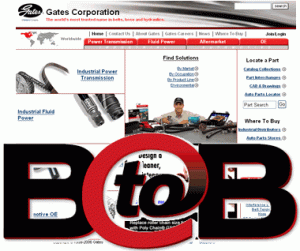by tradesmeninsights | Jun 20, 2023 | Tradesmen Insights
By Matt Sonnhalter, Vision Architect
It’s probably not surprising that 4 of the Top 5 channels are online/digital according to a recent report from Wunderman Thompson Intelligence, but I bet you the #2 channel is: In-store/at a vendor’s warehouse.
However, while US B2B buyers are searching on Amazon Business and the site commands an estimated 15% of their buying budgets, it’s not necessarily where buyers are starting their purchasing journey.
The largest share of US respondents say they most often start their journey in-store or at a vendor’s warehouse (26%), while fewer start on Amazon Business (16%).
The pandemic played a role in people purchasing online more but spending online is likely to decrease post-pandemic.
Here are some additional nuggets from the report:

- Nearly all US respondents have switched suppliers for all (55%) or some (41%) business purchases during the pandemic
- Almost half (49%) of all B2B purchases are made online
- 62% of buyers would like to have dedicated smartphone apps through which they can make B2B purchases
- 89% of B2B buyers in the UK and US find buying online more complicated than offline
- Promotions and marketing are the #1 influencing factor in B2B purchasing
With a high percentage of B2B buying happening online, it’s important to have your suppliers get their online portals right. Online portals can change a customer’s shopping experience and leave them with a positive attitude.
by tradesmeninsights | May 27, 2009 | Marketing Trends
 I know you’re convinced that your product or service is the best solution to a tradesman’s problem. According to a recent post in B2B marketing online, a new study from Enquiro Research shows that 99% of B-to-B buying is about CYA. If business buying is driven more by risk adversion, then you need to address those and take the risks out.
I know you’re convinced that your product or service is the best solution to a tradesman’s problem. According to a recent post in B2B marketing online, a new study from Enquiro Research shows that 99% of B-to-B buying is about CYA. If business buying is driven more by risk adversion, then you need to address those and take the risks out.
This puts a different light on how to approach these buyers to improve your conversion rates. Here’s a summary of some of their suggestions:
- Understand Business Buyer Risk. To improve conversion rates, it’s essential to understand the extent to which your company and its products or services may be perceived by your target buyers. From the eyes of the buyers, where do you stack up: are you a major player in the market or a new entry?
- Become an “Approved Vendor.” If you’re not the 800# gorilla in the market, you have an uphill battle. You could have the most brilliant marketing strategy, were able to get in to see the right people and even demo the product, but you don’t get the order. Reason – we got a better deal from our existing vendor or we went with an approved vendor. One way to address this is champion a teaser offer, e.g. 60-day trial period.
- Use Search Marketing to drive Word-of-Mouth. Enquiro research suggests that word-of-mouth can be hugely influential in the buying process, especially in those cases where the buyer has no previous experience in that product category. Search marketing is a powerful tool for getting your message in front of prospects.
- Personalized messages to different targets. Make each landing page, e-newsletter or offer as relevant as possible to the target. To increase conversions: match prospects with happy customers that came from similar risk profiles. Also consider linking to customer reviews.
What are you doing to improve conversions to sales?



 I know you’re convinced that your product or service is the best solution to a tradesman’s problem. According to a recent post in
I know you’re convinced that your product or service is the best solution to a tradesman’s problem. According to a recent post in